While i was in Amsterdam for the Picnic conference, i took the tram number 5 to nearby Amstelveen to check out the China Now exhibition at the Cobra Museum.
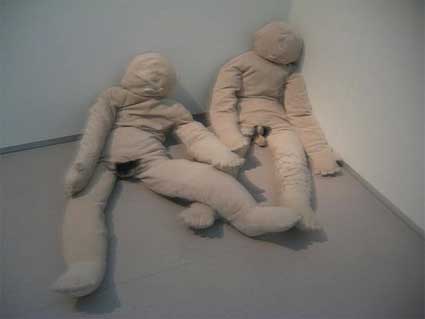 UNMASK – UM Puppets
UNMASK – UM Puppets
It seems that exhibitions about Chinese contemporary art in Europe and the US work with a list of the same few dozen artists. There´s thus very little space left for surprises. You are always sure to find something cute, something politically subversive (openly or not) and something slightly shocking. Add to that cynicism, a bit of exotism (there is an undoubtedly Chinese touch in each of these works) and soft colours and you´ve got a show which is bound to be a hit with the whole family. And in case you haven’t noticed already, i am a sucker for that kind of popcorn art.
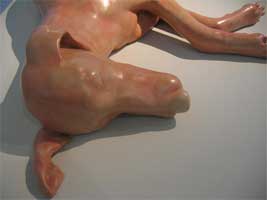
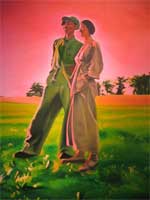 Xiang Jing, Heaven and Jing Kewen, Together
Xiang Jing, Heaven and Jing Kewen, Together
Contemporary Chinese art is a recent phenomenon. The 1990s government policy helping, the Chinese avant-guarde has moved from the underground scene to prestigious art galleries and museums around the world.
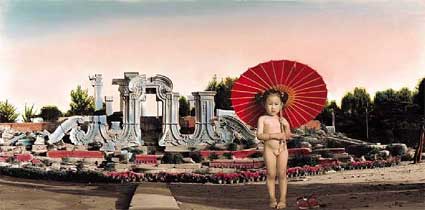 Shao Yinong and Mu Chen, Childhood Memory – Yuanmingyuan (via)
Shao Yinong and Mu Chen, Childhood Memory – Yuanmingyuan (via)
Curator Feng Boyi has distributed the art works according to 7 themes:
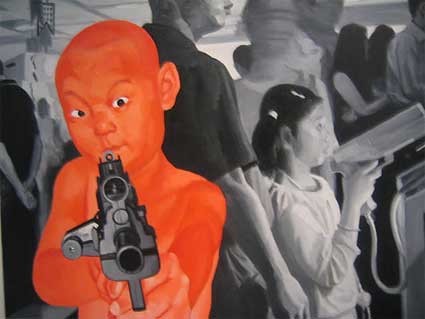 Wang Dajun, Image of Children No. 19
Wang Dajun, Image of Children No. 19
– Rebellious Sarcasm where artists use derision to highlight the individuality of human beings and criticise the orthodox prevailing order. Wang Guangyi and Wang Dajun ironically quote the Pop Art language of Chinese socialist propaganda posters and the aesthetic concepts of consumer society advertising. Fang Lijun’s series of pictures of ugly bald men and Yue Minjun’s grinning figures put their finger on the vulnerable spots of Chinese society. The sarcastic ingredient of Zhang Xiaogang is much more subtle. His “Bloodline Series“ reflects on family, memory and the importance of Chinese culture.
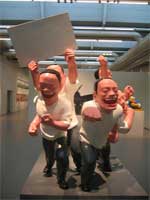
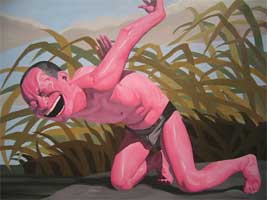 Yue Minjun, Romanticism and Realism Study and Free and Leisure 7
Yue Minjun, Romanticism and Realism Study and Free and Leisure 7
– Destructive Urge highlights the new forms of expression used by mainly young artists. Broken passions and a very unspoilt, impulsive strength emerge from the oil paintings of Yang Shaobin, the irreverent Study of Perspective photographs of Ai Weiwei and the actionist images of performance artist Rong Rong.
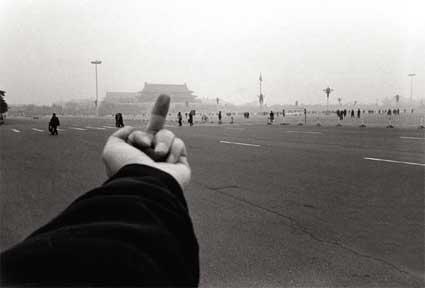 Ai Weiwei – Study of Perspective – Tiananmen
Ai Weiwei – Study of Perspective – Tiananmen
– Personal or Collective Experience and Memory: Li Songsong or Hai Bo assess current changes by comparing them with historical developments and thus demonstrate their own attitude towards these changes.
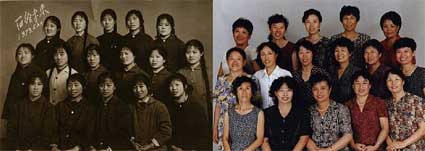 Hai Bo, They series No. 6 (via)
Hai Bo, They series No. 6 (via)
In that thread i particularly admired Assembly Halls, an amazing series by Shao Yinong and Muchen. They traveled to the 23 different provinces in Mainland China and photographed the empty leftovers of the Great Proletarian Cultural Revolution (1966 to 1976.)
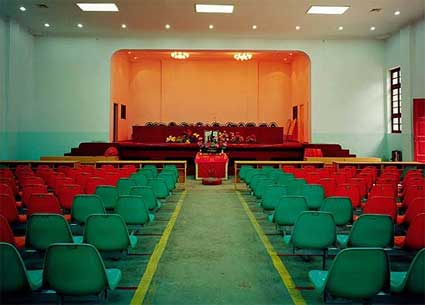 Shao Yinong and Muchen, Assembly Halls
Shao Yinong and Muchen, Assembly Halls
– Reverberation of the City where urbanisation is not only considered as a manifestation of the modernisation process in the country, but also as a medium which accelerates the development of a new, humanist value system. For Miao Xiaochun who composes urban landscapes inhabited by an enigmatic human figure or Zhang Dali who had hanged naked bodies in the staircase of the Museum, the identification, reflection on and critique of this situation represents their artistic point of departure to portray a modern landscape of the specifics of Chinese urbanisation.
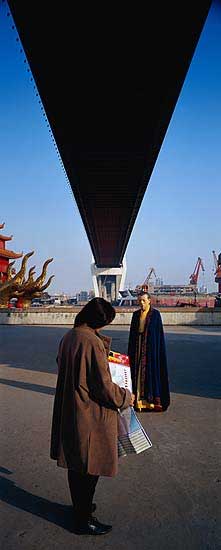
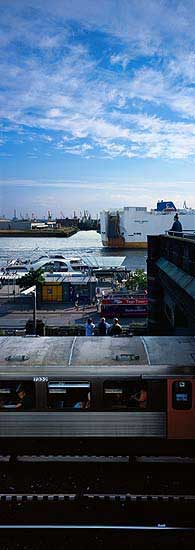 Miao Xiaochun, Voyage and Ferry (More images)
Miao Xiaochun, Voyage and Ferry (More images)
– Beautiful Chaos sets to demonstrate that despite its problems, the new China is not a stagnant system, but a lively and stimulating chaos. Cases in point are the Chinese landscapes by Liu Wei – which consist of human limbs and behinds.
– The Third Space dedicated to Chinese artists living abroad or working internationally, such as Qin Yufen (who lives in Berlin) and Xu Bing (resident in the US), who create their work in a “border zoneâ€? (that´s the “third zone”) between the culture of their home country China and their country of residence.
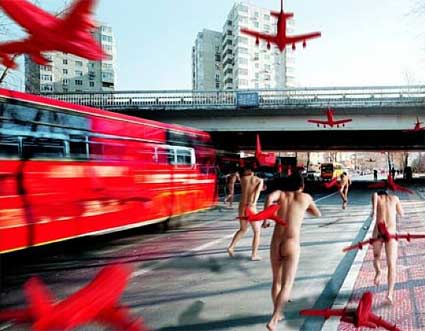 Chi Peng, Sprinting Forward 2
Chi Peng, Sprinting Forward 2
– Growing up and Individual Decision-Making, the approach of artists such as Chi Peng is symptomatic of the mental state of the new generation in China which is full of “good vibrationsâ€?; they typically do exactly what they want to achieve and are very frank in their expression of joy, pain, love and disgust.
More images.
